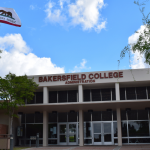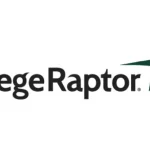The promise of artificial intelligence is that it gets smarter over time.
And yet, there is a rub in that statement. If an AI-powered chatbot gets smarter over time, it may operate at a level that may be considered below optimal for a period of time.
The challenge therefore is to minimize the period of time the chatbot is “weak”, in order to provide users the strongest experience possible, as early as possible.
So how can an institution implement an AI-powered chatbot in a way that provides students with a strong “day 1 experience” and also ensures the chatbot’s learning on a go-forward basis is as strong as it can be?
Here are five observations and recommendations we have found from supporting roughly 500 colleges and universities across the US that can answer these questions:
1. Tap into a “Multi-Tenant” AI Platform that is dedicated to Higher Education
A “multi-tenant” approach to AI supports learning for every chatbot on its platform, from the cumulative engagement taking place across the user base. This “big data” approach enables the platform to get smarter and smarter. The learnings benefit every chatbot on the platform. At Ocelot, our platform has had over 8 million interactions over the past year alone. Each chatbot benefits as the AI learns from these interactions to better understand student questions, intents and patterns. This means that every chatbot starts with a strong day 1 experience.
2. Tap into an AI Platform that Provides Compliance Support for Title IV, Title IX, and International Programs
In critical areas – such as financial aid – state and federal programs change over time. Keeping up with this compliance is challenging for many colleges and universities. A chatbot that has a dedicated compliance team following regulatory changes ensures that a core aspect to your chatbot is current and compliant. At Ocelot, we have found that, over time, 60-65% of student questions have something to do with “money.” Having a chatbot that is well-versed in all matters financial aid gives your institution a strong foundation and starting point. Including other regulated content areas such as Title IX and International Programs can be vital as well.
3. Tap into a Broad Knowledge Base of Higher Education Content
Across the Ocelot network of AI chatbots, 16% of questions are being answered from Ocelot’s knowledge base. This means that 1 out of 6 questions are being serviced with no lift or work from the institution with content that doesn’t exist on the institution’s website, internal FAQs, or elsewhere. Think about that. Nearly 20% of the chatbot’s day-in, day-out interactions with students are being handled by a machine. The students get accurate information. They get it quickly. And there is no burden on the school to train the chatbot to make it happen.
4. Tap into an AI Platform that Understands Non-English Languages
There are two ways in which a chatbot can handle non-English conversations: 1) by using an off-the-shelf tool provided by big tech companies, or 2) using proprietary software that is trained to handle non-English conversations using higher education specific terminology. The former is a quick solution, but it will struggle to provide more than the “gist.” The latter approach – which we have taken at Ocelot – is to train the AI specifically with higher education terminology. At Ocelot, our non-English language algorithms have been trained with the same terminology used by the US Department of Education, to achieve independent translation scores that match “at or above human translation levels.” Taking this approach goes a long way toward providing non-native English-speaking students, their families and support systems with accurate translations.
5. Use the Chatbot as a “Quick First Step” for Students
Technology cannot solve everything. But it can be a key component in a college or university’s overall strategy. When it comes to communication, there is a huge opportunity for institution’s to use new technologies such as AI chatbots to implement workflows that reduce obstacles and friction for students. Take the time to integrate the technology with your SIS and CRM so that it provides students with a more personalized experience. There are many forms to complete as a student moves along the path from prospect to applicant to enrolled student. Use the chatbot as a “quick first step” to enable students and parents to learn “What forms do I need to complete?” “Can you help me complete this form?” and other related workflow questions.
The Wrap
We are just scratching the surface of the power of AI chatbot technology. If you are considering this technology, be sure to think through how it will function and how it is built. Not all chatbots are created equal. The AI chatbots that 1) are “multi-tenant”, 2) include a broad range of content focused on higher education, 3) support languages that provide more than the “gist”, 4) are updated dynamically for compliance, and 5) can be a “quick first step” will provide a great day 1 experience and deliver the greatest learning and growth over time.















